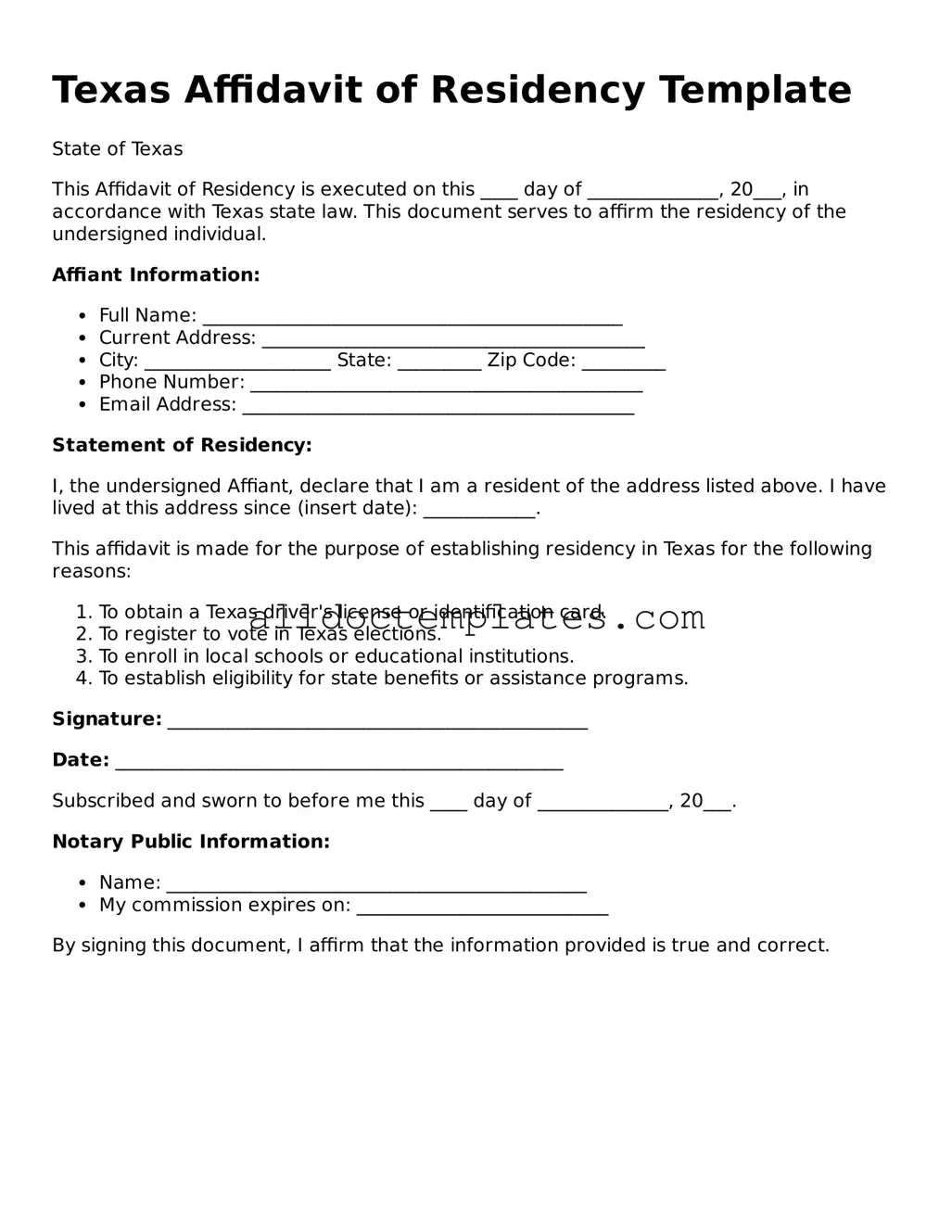Texas Affidavit of Residency Template
State of Texas
This Affidavit of Residency is executed on this ____ day of ______________, 20___, in accordance with Texas state law. This document serves to affirm the residency of the undersigned individual.
Affiant Information:
- Full Name: _____________________________________________
- Current Address: _________________________________________
- City: ____________________ State: _________ Zip Code: _________
- Phone Number: __________________________________________
- Email Address: __________________________________________
Statement of Residency:
I, the undersigned Affiant, declare that I am a resident of the address listed above. I have lived at this address since (insert date): ____________.
This affidavit is made for the purpose of establishing residency in Texas for the following reasons:
- To obtain a Texas driver's license or identification card.
- To register to vote in Texas elections.
- To enroll in local schools or educational institutions.
- To establish eligibility for state benefits or assistance programs.
Signature: _____________________________________________
Date: ________________________________________________
Subscribed and sworn to before me this ____ day of ______________, 20___.
Notary Public Information:
- Name: _____________________________________________
- My commission expires on: ___________________________
By signing this document, I affirm that the information provided is true and correct.
